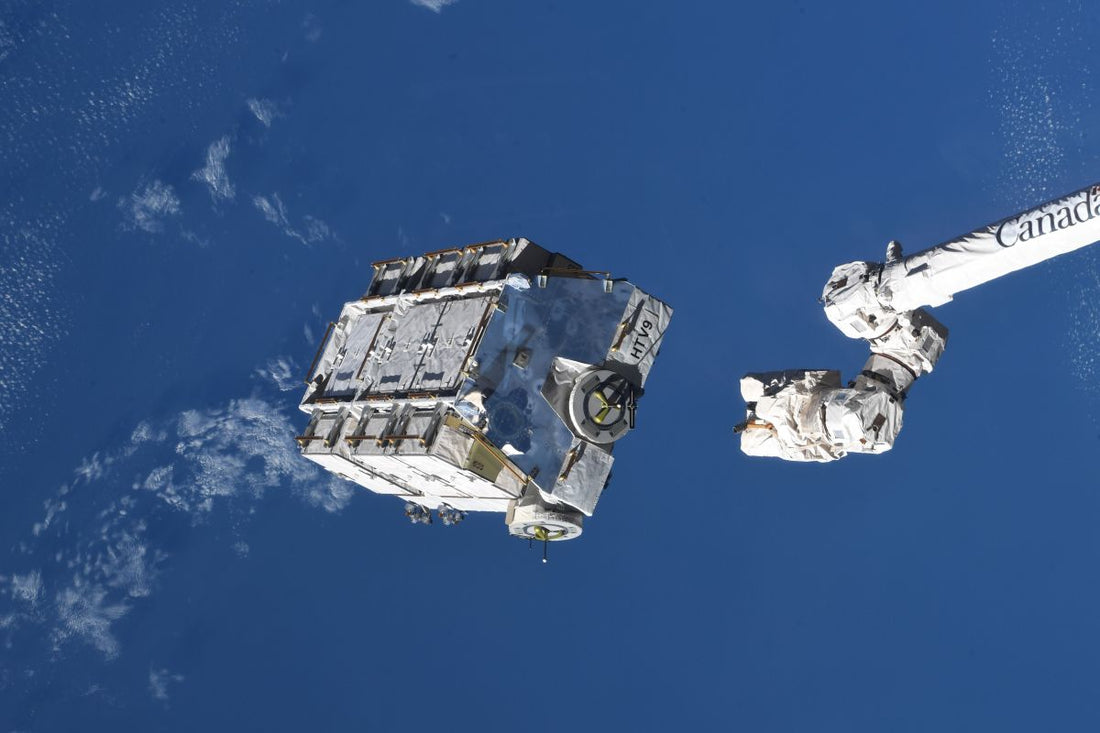
NASA Dumped 2.6-Tonnes Of Nickel-Hydrogen Batteries Into Earth's Orbit
Share
Agency officials wrote in an update last week that the pallet will fall back to Earth in two to four years. However, it's not clear if it will burn up harmlessly in the atmosphere.
The International Space Station jettisons 2.6-tonnes of used batteries on March 11, 2021.
According to astronomer and author Phil Plait, whose “Bad Astronomy” blog runs on Syfy Wire, "This strikes me as dangerous. It seems big and dense so unlikely to burn up completely."
"Yes. On the other hand, e.g. Tiangong-1 was 7500 kg, much bigger. But I would say given how dense EP9 is, it's concerning, albeit at the low end of concerning," responded astronomer and satellite Jonathan McDowell, from the Harvard-Smithsonian Center for Astrophysics.
China's Tiangong-1 was the first prototype space station to host astronaut crews in 2012 and 2013. The school bus-sized craft crashed back to Earth in the middle of the southern Pacific Ocean in April 2018.
EP9, short for "Exposed Pallet 9," is the recently jettisoned object. A Japanese H-II Transfer Vehicle brought EP9 to the International Space Station last year, completing the five-year project that aims to replace the old nickel-hydrogen batteries with lithium-ion ones.
The effort required four supply missions from the Japanese H-II Transfer Vehicle (HTV) cargo spacecraft, 13 different astronauts, and 14 spacewalks, in which 48 nickel-hydrogen batteries were replaced by 24 lithium-ion batteries.

For decades, old batteries were loaded into disposable HTVs and transported downward into the planet's atmosphere.
Spaceflight Now reported this pattern was disrupted in October 2018 after a Soyuz rocket carrying NASA astronaut Nick Hague and cosmonaut Alexey Ovchinin failed to launch. Thanks to this, the pattern of spacewalks was disrupted and the final HTV left without a battery pallet. Leaving EP9 with no ride back to Earth’s atmosphere to burn up.
And so, the battery-packed pallet was jettisoned from the space station, at approximately 427 km above Earth. A decision made by space station managers.
In an update from NASA, Johnson Space Center ground controllers released the orbiting lab's 57.7-foot-long (17.6-meter) robotic arm to place EP9 in orbit on Thursday morning.
“It used to be that it wasn’t a big deal to toss stuff from ISS because very few satellites were below it [at altitudes below 250 miles (400 km)], ” says McDowell. “That’s not so true any more with a bunch of cubesats and with recently launched Starlinks during orbit raising. So I have concerns. I don’t immediately see what else they could have done except fly a whole extra HTV mission just to get rid of it.”
A space-junk-filled load has company up there too. According to researchers from the European Space Agency, approximately 34,000 pieces of debris that are at least 10 cm in diameter and 128 million pieces of debris even slightly larger are present in Earth orbit.
More than 200 million tinier objects, such as tools and bits of spacecraft, are scattered in outer space, prompting concerns of increased collisions and even more minuscule orbital debris.
"Really loving the look and feel of this shirt. Sick design and it’s really comfortable. Plus it helps with finding aliens so that’s cool..." - Hubert
Every day Australians are joining together to help spread ARSE!
Check out our supporter gear to thrust Australia into the deep unknown.





